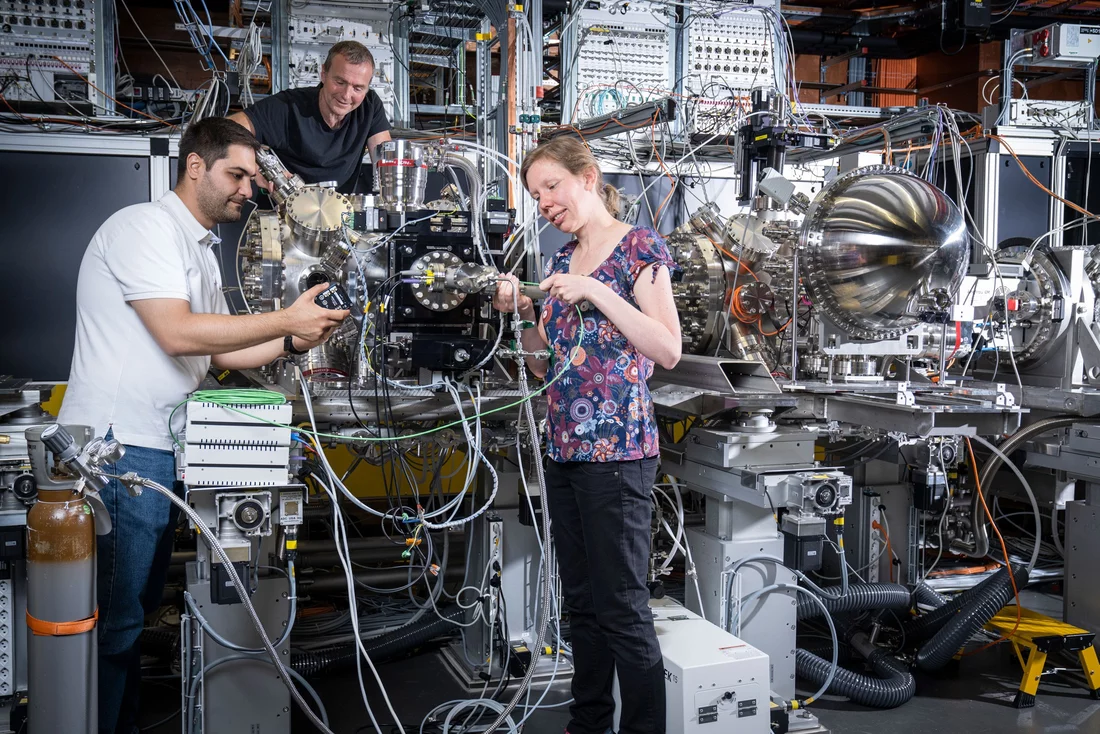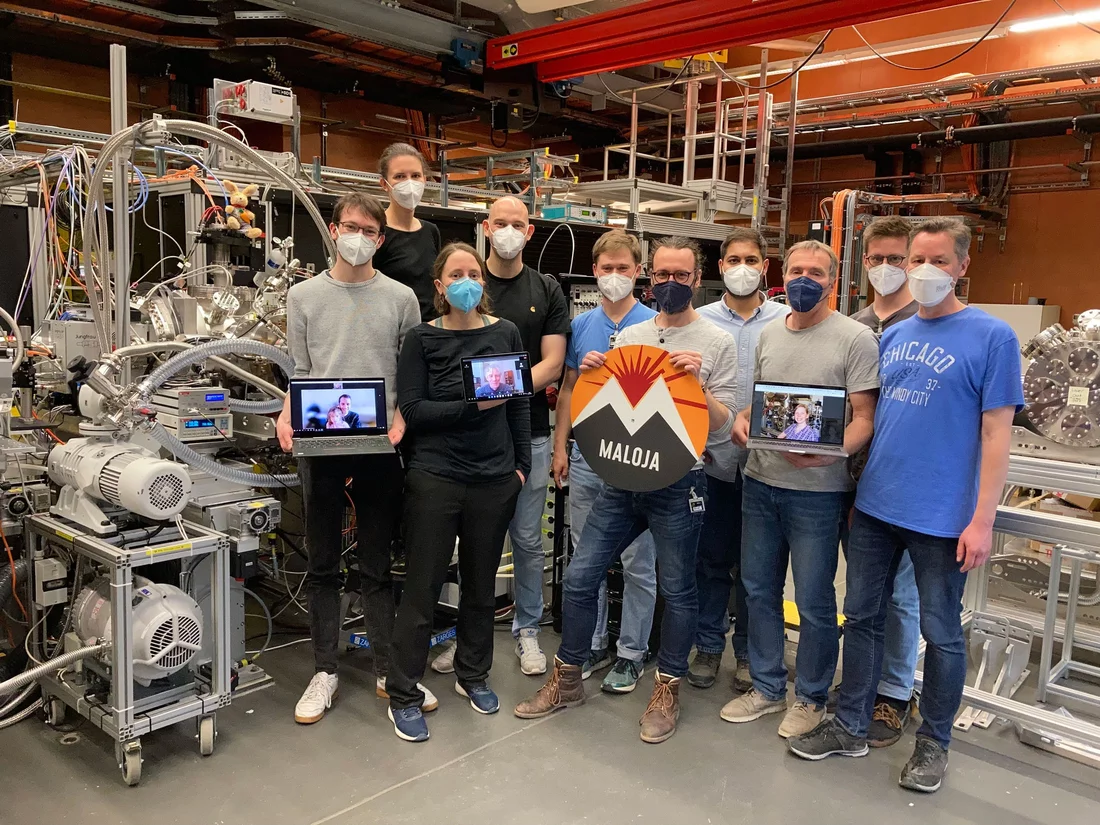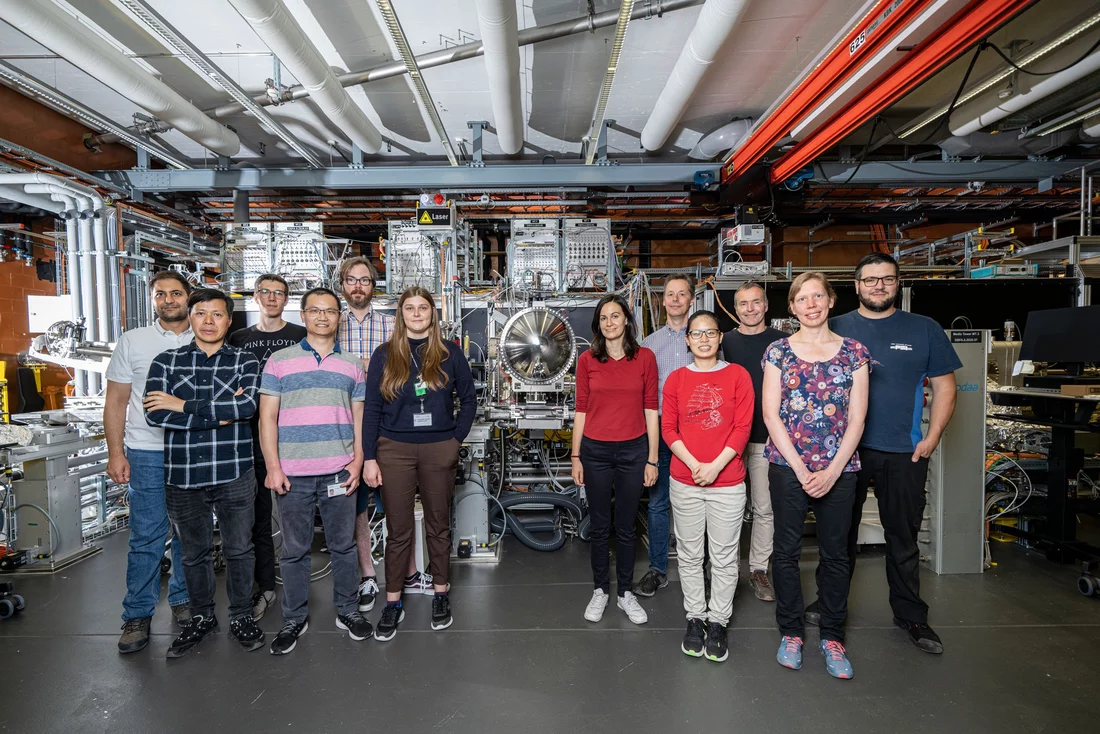Maloja is go. On Wednesday, 23rd March 2022, first user experiments began at the Maloja endstation, which enables explorations into atomic, molecular and optical physics and chemical dynamics. These user experiments mark a double first, not only for Maloja but also for the second, soft X-ray beamline of the SwissFEL, Athos.
Following two years of tireless development, Maloja is beginning to yield its scientific fruits. Developed in parallel with soft X-ray beamline Athos, Maloja is the first endstation to be up and running, and takes advantage of advanced beam parameters, namely, very short pulses, two colour pulses and pump-probe experiments. A key feature of the Maloja endstation is its modular nature, enabling straightforward exchange of chambers and tailoring to individual experimental requirements.
“Because of its flexible design, a wide variety of investigations are possible at Maloja, such as time-resolved measurements of electronic structure changes, non-linear X-ray spectroscopy or research into gas-phase atoms or nanoparticles. I’m really excited to see the diverse science that future users will turn up with,” enthuses Kirsten Schnorr, lead scientist at the Maloja endstation.
Work began on the Maloja project in 2019, with the COVID pandemic striking a few months after first hardware deliveries. With staff working night shifts to create ‘time-dimensional social distancing’, in June 2020 first light entered the Maloja endstation. This heralded the beginning of commissioning experiments and a very close collaboration between the Maloja team and accelerator groups as, step-by-step, the teams developed not only the Maloja endstation, but also a whole new branch of the SwissFEL: Athos.
“There’s a difference between producing light and producing the best possible light. With the endstation in place, we could characterise the light, and help the accelerator scientists develop the advanced beam parameters of the Athos beamline,” explains Christoph Bostedt, head of PSI's Laboratory for Synchrotron Radiation and Femtochemistry.
By summer 2021, technical, engineering and scientific staff across the divisions had succeeded in developing a cutting-edge instrument that was ready to address scientific questions. Three pilot experiments followed, which demonstrated the advanced capabilities of both the accelerator and endstation. Building on the success of these experiments, the first call for users was sent out in August 2021.
“It’s a great experience to see other people doing their science here and to feel that we have enabled that,” says Andre Al Haddad, beamline scientist at Maloja, with a smile.
Maloja’s first official users are the Nanostructures and Ultrafast X-Ray Science (NUX) group from ETH Zürich, who are investigating the structure and dynamics of tiny ‘clusters’ with coherent diffraction imaging (CDI). Time-resolved CDI studies of nanometre-scale matter with FEL X-ray light is an emerging technique that can give new insights into novel materials and biological molecules. However, it requires a deep understanding of the changes in matter introduced by the intense X-ray pulses. The ‘clusters’, small agglomerates of a few up to millions of atoms, provide an ideal model system from which to explore this. In this experimental campaign, the structure and dynamics of clusters produced from a mix of xenon and argon is studied. The special core-shell structure of the clusters allows surface processes to be separated from those happening deep insight the small particles. This will help to answer fundamental questions regarding X-ray matter interaction.
The team are taking advantage of Maloja’s unique Jungfrau 4M soft X-ray detector, designed and developed by the detector group at PSI. The Jungfrau is a one-of-a-kind detector for high vacuum and soft X-ray regimes, which pushes noise low enough to detect single photons. A particular speciality is its extremely large dynamic range, which enables linearity over almost four orders of magnitude in the same image.
“The Jungfrau detector is something really unique to this endstation. This makes the coherent diffraction data analysable on a different level, which gives us completely unique insights into the structure and dynamics of argon-xenon clusters,” explains Mario Sauppe, principal investigator of the experimental campaign.
The proof of the pudding is in the eating, and, as to Maloja, the users are impressed. “For these types of experiments, with so many detectors and moving parts, it can be difficult to know exactly what is going on inside the chamber. Maloja is set up to provide a very high degree of control over all the parameters throughout the experiment. It’s very well thought through,” praises Daniela Rupp, project leader and head of the NUX group.
The beamtime has now finished, and the lack of sun and sleep over the past week won’t dull the mood in the Maloja team.
“If you play soccer and have 11 brilliant players, in the end, the success comes from the team. Everyone has to have the same spirit and drive towards the same goal, and maintain this for 2 years. It’s a great feeling to have gone, together, from nothing to doing experiments on the forefront of science,” explains a satisfied Gregor Knopp, senior scientist at the Maloja endstation, as he enjoys some well-earned rays of sun.
Text: Paul Scherrer Institute / Miriam Arrell
Contact
Dr. Kirsten Schnorr
Lead scientist at Maloja endstation
Paul Scherrer Institut
Forschungsstrasse 111
5232 Villigen PSI
Switzerland
Telephone: +41 56 310 27 86
E-Mail: kirsten.schnorr@psi.ch
Prof. Dr. Christoph Bostedt
Head of Laboratory for Synchrotron Radiation and Femtochemistry (LSF)
Paul Scherrer Institute
Forschungsstrasse 111
5232 Villigen PSI
Switzerland
Telephone: +41 56 310 35 94
E-Mail: christoph.bostedt@psi.ch
Further Information
SwissFEL | SwissFEL | Paul Scherrer Institut (PSI)
SwissFEL Maloja | SwissFEL Maloja | Paul Scherrer Institut (PSI)
Homepage – Nanostructures and Ultrafast X-Ray Science | ETH Zurich
Copyright
PSI provides image and/or video material free of charge for media coverage of the content of the above text. Use of this material for other purposes is not permitted. This also includes the transfer of the image and video material into databases as well as sale by third parties.



